Driving on uneven terrain in a Jeep requires a unique set of skills and techniques to navigate challenging off-road conditions safely and effectively. Jeeps are renowned for their off-road capabilities, allowing drivers to conquer rugged terrain with confidence and control. Whether traversing rocky trails, sandy dunes, or muddy paths, mastering the art of driving on uneven terrain is essential for Jeep enthusiasts seeking adventure and exploration off the beaten path.
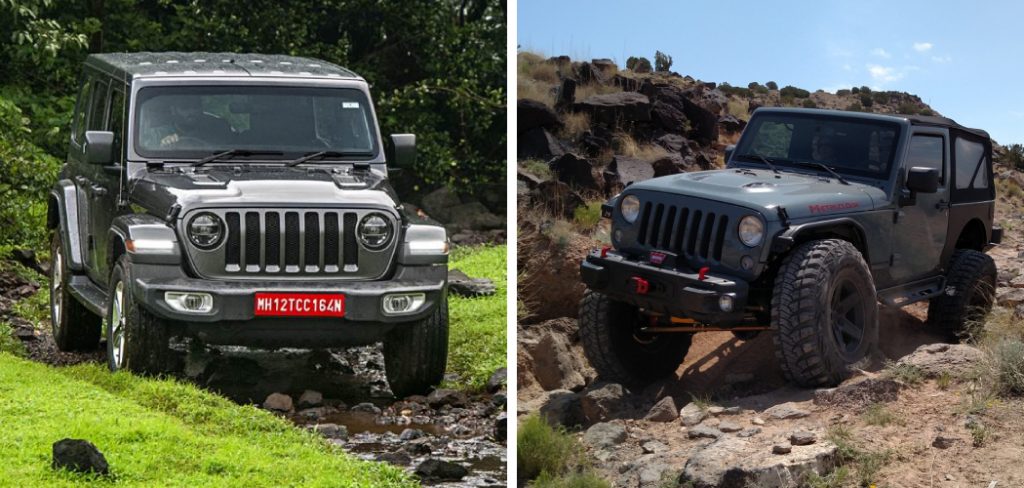
Understanding how to approach steep inclines, rocky descents, and uneven surfaces while utilizing the Jeep’s four-wheel-drive system and off-road features is paramount for overcoming obstacles and maintaining traction. From selecting the appropriate driving mode to adjusting tire pressure and employing proper driving techniques, this article will delve into the essential strategies and considerations for how to drive on uneven terrain in jeep, empowering adventurers to tackle the great outdoors with skill and confidence.
Importance of Mastering Driving on Uneven Terrain in A Jeep
Mastering the art of driving on uneven terrain in a Jeep is not merely about pushing the vehicle’s limits—it’s about the safety and enjoyment of your off-road adventures. Being adept at navigating such challenging environments can prevent accidents and ensure that you maintain control of your Jeep, no matter what unexpected obstacles you might encounter.
Moreover, it deepens your connection with your vehicle, allowing you to leverage its capabilities to the fullest and experience the complete thrill of off-roading that Jeeps are known for. With this expertise, you transform from a casual off-roader to a confident explorer, ready to face the ruggedness of the wild with assurance and respect for the path ahead.
Understanding Uneven Terrain
Venturing into the world of off-roading in a Jeep requires drivers to have a keen understanding of the varying types of uneven terrain they may encounter. Each environment presents unique challenges—muddy trails can significantly reduce traction, while rocky surfaces demand careful wheel placement and throttle control to avoid tire damage or getting stuck.
Sand requires a special approach to momentum and speed to prevent becoming bogged down. Navigating through these different terrains calls for a deep comprehension of surface characteristics and an ability to quickly adapt driving techniques. To successfully conquer uneven landscapes, a driver must be well-versed in reading the path ahead, anticipating the Jeep’s reactions, and making split-second decisions that can mean the difference between a thrilling ride and a stationary struggle.

Types of Uneven Terrain Encountered Off-Road
Off-road terrains can be incredibly diverse, and understanding the specific types is critical for any Jeep owner ready to venture off the pavement. Here are some common types of uneven terrain:
- Rocky Terrain: Often found in mountainous areas, rocky terrain can be very unforgiving. Driving on rocks requires careful tire placement, slow speeds, and the use of low gear to maintain control.
- Mud: Thick mud can act like quicksand for vehicles. Keeping momentum without spinning the tires excessively is essential to avoid becoming stuck.
- Sand: Sandy terrain is commonly encountered in desert environments. Smooth throttle application and maintaining a constant speed are key to prevent getting bogged down.
- Gravel: Loose gravel can be slippery under tires, necessitating careful acceleration and braking to avoid skidding or flipping stones onto the undercarriage.
- Snow and Ice: These conditions require the use of tires with proper traction and potentially chains. Smooth and steady driving is essential to maintain grip.
- Water Crossings: Rivers and streams can be tricky; drivers must consider water depth, current strength, and underlying surface before attempting a crossing.
Familiarity with these terrain types and the challenges they present is crucial for off-roading success. Each environment tests the Jeep’s handling and the driver’s skill in different ways, ensuring that no two adventures are ever quite the same.
Challenges and Obstacles Posed by Uneven Terrain
Uneven terrain poses a multitude of challenges and obstacles that require not just powerful vehicles like Jeeps, but also savvy driving tactics honed through experience. The unpredictability of the trails brings about several challenges, such as hidden dips that can cause abrupt deceleration or even vehicle damage if not approached correctly. Elevation changes, like steep inclines, demand a Jeep’s low-range gearing and judicious use of throttle to climb without causing unnecessary strain on the engine or drivetrain. Conversely, steep descents necessitate controlled braking and gear selection to navigate safely without skidding or rolling.
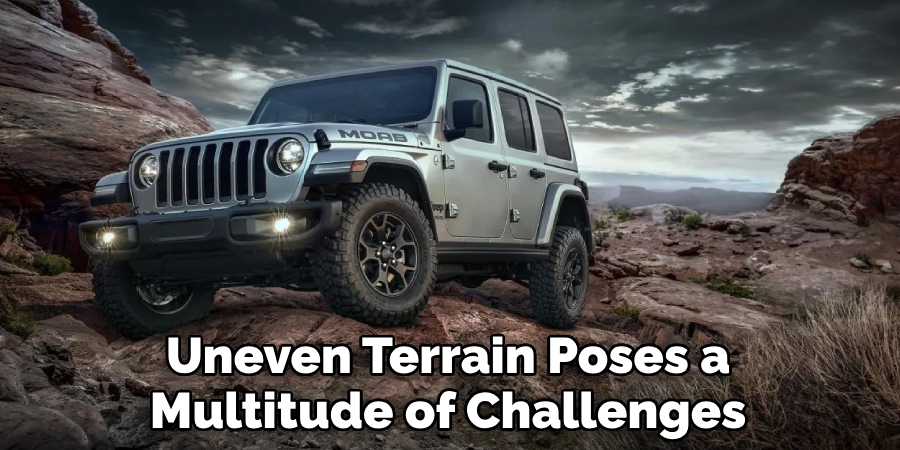
Obstacles like protruding rocks or deep ruts can cause undercarriage damage, requiring drivers to have an acute awareness of their vehicle’s ground clearance and to strategically plan their path to minimize risks. Additionally, unexpected situations like sudden weather changes and daylight fading can also amplify the challenges off-roaders must face, presenting not only a physical challenge but also a test of their mental preparedness and decision-making skills in the face of adversity.
Preparing Your Jeep for Uneven Terrain
Before embarking on your off-road journey, it is crucial to ensure your Jeep is well-prepared to handle the rough conditions of uneven terrain. Preparation begins with a thorough inspection: check the tire condition and pressure, ensuring they are appropriate for the terrain type you’ll encounter. Adjust the suspension settings if your model has this capability, to provide maximum clearance and articulation. Protect vital components by confirming that skid plates are securely attached, safeguarding the undercarriage from damage.
Under the hood, all fluids should be at their recommended levels, and the battery must be securely fastened to avoid disconnections caused by jolting and jarring movements. Ensure your Jeep’s four-wheel-drive system is functioning correctly and familiarize yourself with how to engage different modes and lockers, if available on your model. It’s also advisable to carry essential recovery gear such as tow straps, winch, shovel, and a high-lift jack. Having a well-prepared Jeep will increase your confidence and capability in traversing challenging off-road conditions.
Ensuring Proper Fluid Levels and Mechanical Condition
Maintaining proper fluid levels in your Jeep is not just a matter of good vehicle health—it’s a requisite for the demands of off-roading. Engine oil, transmission fluid, coolant, brake fluid, and differential fluid should all be checked and topped off as needed before any adventure. This ensures that all mechanical parts of your Jeep are lubricated, cooled, and functioning as designed even under high stress.
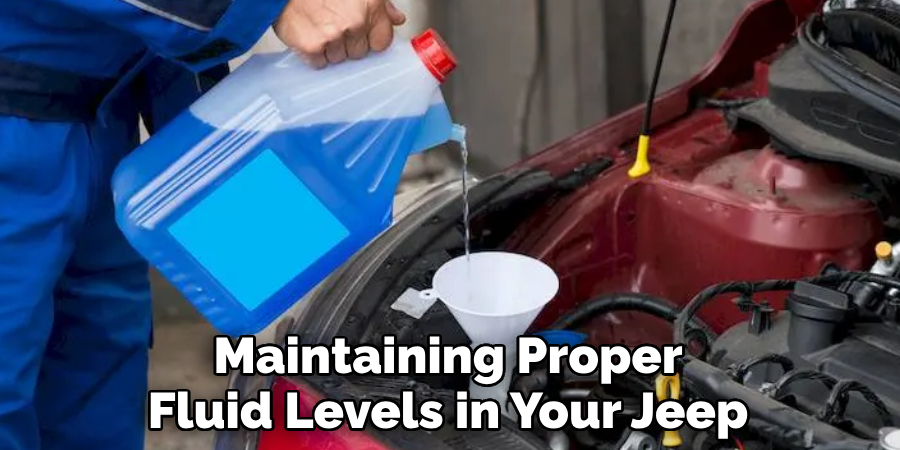
Beyond fluids, the mechanical condition of your Jeep must also be pristine. Regular inspections should check for any signs of wear or damage on the suspension, brakes, and steering components, as well as ensuring that all bolts are tightened to the correct specification to withstand the constant vibration and jolting of uneven terrain. A mechanically sound Jeep not only endures the rigorous challenges of off-roading but also ensures the safety and reliability of your adventurous pursuits.
Engaging Four-Wheel Drive (4WD) System
Understanding when and how to engage the Four-Wheel Drive (4WD) system is essential for any off-road enthusiast. Most Jeeps come equipped with a 4WD system that can be activated manually by the driver, depending on the model and the situation. When traction is compromised on muddy, sandy, or snowy terrain, switching to 4WD can provide the necessary power to all four wheels, enhancing grip and preventing the vehicle from becoming stuck.
Before engaging 4WD, reduce your speed and ensure that the vehicle is either stationary or moving at a crawl to prevent damage to the drivetrain. Familiarizing yourself with your Jeep’s specific 4WD system, which may include high and low range options, will help you tackle obstacles with confidence and skill. Always refer to the owner’s manual for detailed instructions on engaging and disengaging the 4WD to guarantee correct operation and avoid unnecessary mechanical strain.
Selecting the Appropriate 4WD Mode
Selecting the appropriate 4WD mode is pivotal in navigating the complex terrain one may encounter during off-roading. High-range 4WD is typically used for conditions where traction is reduced, such as on gravel or dirt roads, but high speeds are still maintainable. This setting allows for a balance between traction and maneuverability.
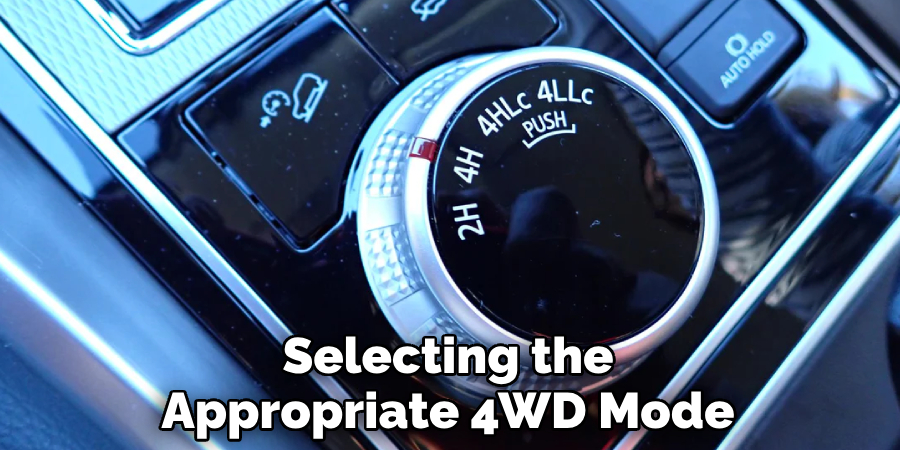
Low-range 4WD, on the other hand, is crucial for the toughest terrains, where slow, controlled power is necessary to conquer steep inclines, rocky obstacles, or particularly slippery mud. It provides increased torque at lower speeds, allowing for meticulous handling and enhanced pulling power. Always engage 4WD modes as dictated by the terrain and situation, and disengage them when returning to normal road conditions to preserve your vehicle’s drivetrain.
10 Methods How To Drive on Uneven Terrain in Jeep
1. Preparation and Inspection:
Before embarking on an off-road journey, conduct a thorough inspection of your Jeep. Check tire pressure and tread depth, inspect suspension components, and ensure all fluids are topped up. Proper preparation minimizes the risk of breakdowns and enhances safety on the trail.
It is also important to pack all necessary supplies and equipment for the trip, including a first aid kit, emergency tools, recovery gear, and enough food and water. Don’t forget to bring a map or GPS device in case you get lost.
2. Engage Four-Wheel Drive (4WD) System:
Utilize the 4WD system to maximize traction and maneuverability on uneven terrain. Depending on the terrain’s severity, select the appropriate 4WD mode such as 4H (high-range) or 4L (low-range) for enhanced torque and control.
3. Maintain Momentum:
Momentum is crucial when driving on uneven terrain. Maintain a steady speed to carry momentum through obstacles, but avoid excessive speed that may lead to loss of control. Gradual acceleration and deceleration help maintain traction and stability.
Having a clear understanding of momentum is essential for safe and successful off-roading. Momentum refers to the quantity of motion possessed by an object, in this case, your vehicle. When driving on unstable or uneven terrain, maintaining momentum is crucial. It helps keep the vehicle moving forward smoothly while reducing the impact of bumps and obstacles.

4. Choose the Right Line:
Select the optimal path, or “line,” to navigate through obstacles. Assess the terrain ahead and choose the path with the least resistance and the best traction. Avoid large rocks, deep ruts, and other potential hazards that could damage your Jeep.
When it comes to off-roading, choosing the right line can make all the difference. It not only ensures a smooth ride but also minimizes potential damage to your vehicle. However, finding the right line takes practice and skill. Here are some tips to help you choose the best route for your Jeep’s off-road adventure.
5. Utilize Proper Braking Technique:
Practice proper braking technique to maintain control on uneven terrain. Use threshold braking by applying steady pressure to the brake pedal, avoiding sudden or aggressive braking that may cause wheel lock-up and loss of traction. Maintain a safe following distance to allow enough time for gradual braking.
Additionally, it is important to maintain and regularly check your brakes for proper function. This includes checking the brake pads, rotors, and brake fluid levels. If you notice any issues or abnormalities with your brakes, it is best to have them inspected and repaired by a professional mechanic.
6. Adapt to Inclines and Declines:
Approach steep inclines and declines with caution and confidence. Ascend inclines at a steady pace, maintaining momentum and traction. Descend declines slowly, using engine braking and low-range gearing to control speed and prevent wheel lock-up. Use four-wheel drive or engage differential locks when necessary to maximize traction and stability.
When approaching an incline, it is important to assess the grade and choose the appropriate gear for your vehicle’s capabilities. Maintaining a steady pace and momentum will help prevent stalling or losing traction on the steep terrain. However, be sure not to accelerate too aggressively as this can cause wheel spin and loss of control.
7. Use Off-Road Features:
Activate off-road features such as locking differentials and electronic traction control systems to improve traction and stability. Engage sway bar disconnects to increase wheel articulation and maintain contact with uneven surfaces.

Utilize hill descent control to safely navigate steep inclines. Though these features are typically designed for use on uneven or unpaved surfaces, they can also be helpful in extreme weather conditions such as snow or mud. Additionally, make sure to adjust your tire pressure according to the terrain you’re driving on. Lowering tire pressure can increase surface area and provide better grip in certain off-road situations.
8. Negotiate Obstacles Carefully:
Approach obstacles such as rocks, boulders, and tree roots with care and precision. Use spotters to guide you through challenging sections and help identify the safest route. Approach obstacles at an angle to reduce the risk of high-centering or vehicle damage.
To further ensure your safety while navigating obstacles, it is important to frequently assess the terrain ahead and adjust your approach accordingly. This includes keeping an eye out for potential hazards such as loose rocks or deep mud, and making necessary modifications to your route.
9. Cross Water and Mud Safely:
Approach water crossings and muddy terrain with caution. Test the depth and condition of water crossings before proceeding, and maintain a steady pace to prevent water from entering the engine bay. Use a low gear and avoid sudden acceleration to navigate through mud and soft terrain. If necessary, use a winch or recovery equipment to safely cross difficult or impassable areas. Additionally, it is important to be mindful of the environment and not cause unnecessary damage to the surrounding area.
Water crossings can be particularly dangerous, as they often hide obstacles underneath the surface. It is crucial to check the depth and condition of the water before attempting a crossing. If possible, find an alternate route or wait for water levels to decrease before proceeding. If you must cross,
10. Practice Off-Road Etiquette:
Respect the environment and other trail users by practicing responsible off-road etiquette. Stay on designated trails, pack out all trash, and minimize disturbances to wildlife and natural habitats. Be courteous to other off-roaders and yield the right-of-way when necessary. Also, be mindful of noise levels and avoid creating unnecessary disturbances. However, off-roading can be a thrilling and enjoyable activity, it is important to do so responsibly and with respect for the environment and others.
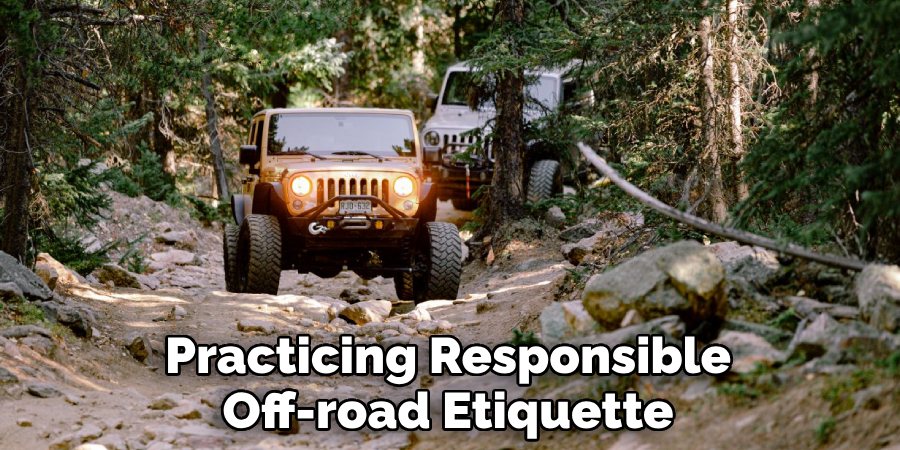
Conclusion
In conclusion, mastering the art of driving on uneven terrain in a Jeep is essential for off-road enthusiasts seeking adventure and exploration. By implementing the ten methods outlined above, drivers can navigate challenging off-road conditions with confidence, skill, and respect for the environment.
From proper vehicle preparation and engagement of the 4WD system to choosing the right line and negotiating obstacles with care, each method contributes to a safe and enjoyable off-road experience. By prioritizing safety, practicing responsible off-road etiquette, and continuously honing off-road driving skills, Jeep enthusiasts can unlock the full potential of their vehicles and embrace the thrill of off-road exploration. So, there you have it – a quick and easy guide on how to drive on uneven terrain in jeep.

About
JeepFixes Team is a skilled author for Jeep Fixes, bringing 6 years of expertise in crafting a wide range of jeep fixes. With a strong background in jeep fixes work, JeepFixes Team’s knowledge spans various types of fixtures, from decorative pieces to functional hardware, blending precision with creativity. His passion for jeep fixes and design has made him a trusted resource in the industry.
Professional Focus:
Expert in Jeep Fixes : JeepFixes Team aesthetic specializes in creating durable and innovative jeep fixes, offering both appeal and functionality. His work reflects a deep understanding of jeep fixes techniques and materials.
Sustainability Advocate : He is dedicated to using sustainable practices, ensuring that every fixture is crafted with eco-friendly methods while maintaining high-quality standards.
In his writing for jeep fixes, JeepFixes Team provides valuable insights into the latest trends, techniques, and practical advice for those passionate about jeep fixes, whether they are professionals or DIY enthusiasts. His focus on combining artistry with engineering helps others discover the true potential of jeep in design.
